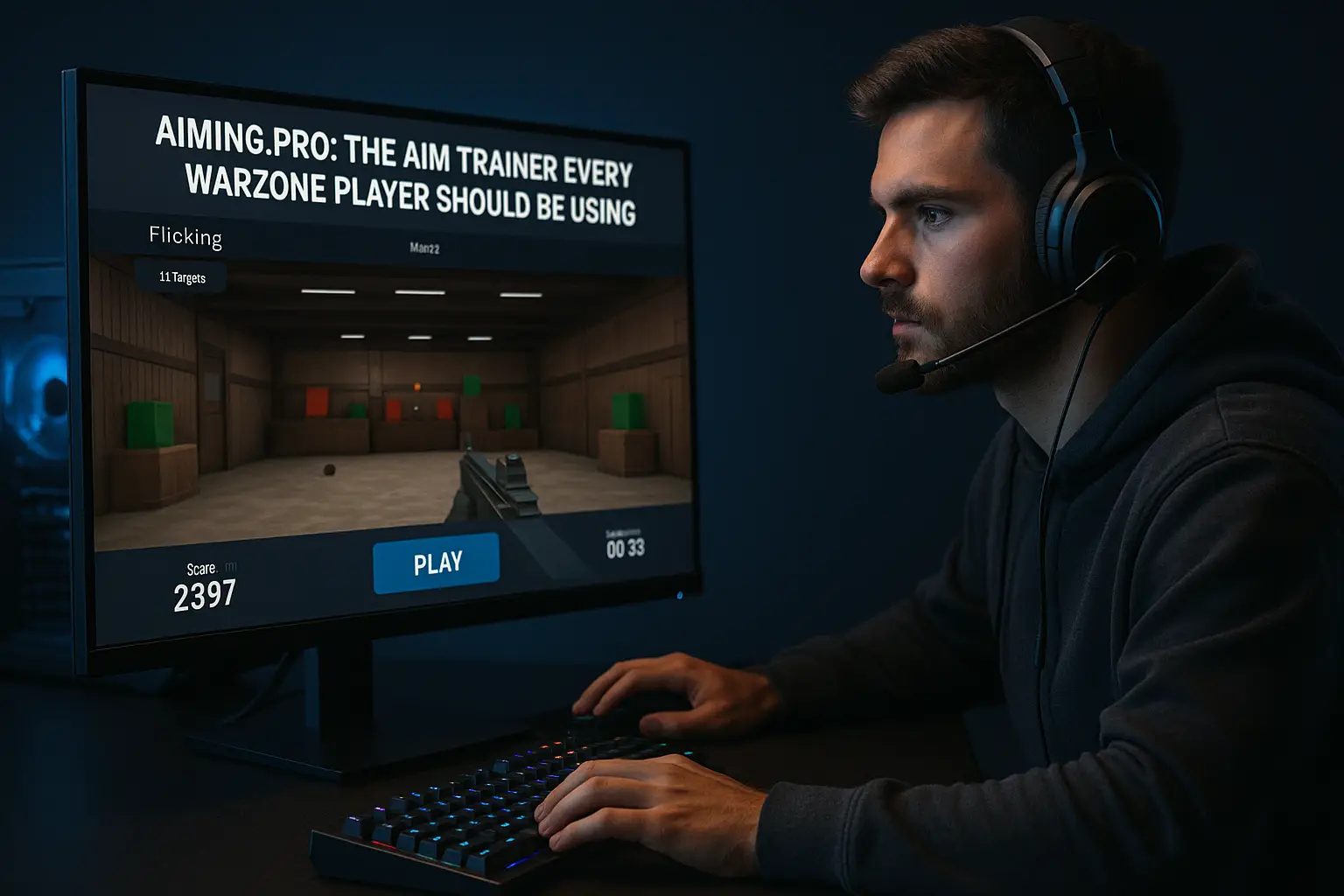
5 Tips to Master the Warzone COD Tactical Layout
Why Every Pro Player Uses the Tactical Layout in Warzone COD What Is the Tactical Layout and How Does It
Gaming is an enjoyable hobby for many, but balancing it with daily tasks can be challenging. I have experienced the difficulty of keeping up with work, studies, or household chores while also making time to play my favorite games. Finding a balance requires some planning, discipline, and self-awareness.
There are moments when gaming feels like the ideal escape after a busy day. Yet, I have noticed that it can easily interfere with essential responsibilities without structure. This article explains practical steps to help manage time between gaming and everyday tasks. I will share approaches that have worked for me to maintain a healthy balance and ensure that my obligations and leisure time receive proper attention.
I’ve also added extra insights to offer a broader view of managing your day without sacrificing your downtime gaming sessions.
Table of Contents
ToggleBefore allocating time for gaming, I have learned it is essential to understand my responsibilities and what I value most. I figure out my top tasks, goals, and deadlines. This helps me create a clear picture of what must be accomplished daily. Evaluating my priorities gives me a solid foundation for managing time effectively.
When I list my priorities, I feel more confident arranging my day. I can set aside specific gaming hours without sacrificing tasks requiring immediate attention. Taking the time to reflect on and write down these priorities is a small step that can influence the structure of your day.
Additionally, keeping a journal where you list accomplishments and pending tasks can help you remain focused. This extra layer of organization ensures that every activity, whether for work, study, family, or gaming, gets the proper time allocation. It also allows you to track the evolution of your scheduling skills as your life changes.
Creating a gaming schedule helps me define when I will play strictly and for how long. A defined schedule keeps gaming as a fun downtime activity rather than a distraction. I begin by selecting a time slot that works best and fits snugly around my other responsibilities.

This technique helps keep gaming organized and ensures it does not take over the entire day. A clear schedule prevents gaming from interfering with my other plans. Adding a fixed start and finish time to your gaming slots keeps you disciplined and makes your leisure time feel more rewarding when you adhere to it.
Writing your schedule in a planner or using a digital calendar to visualize your day can also be helpful. Sometimes, seeing your day broken down into dedicated segments motivates you to stick to your plan, ensuring you have enough hours left for productivity and essential daily chores.
Once I have a set schedule, it is equally important to establish boundaries. These boundaries ensure that my gaming sessions remain within limits. Without them, I may be tempted to continue playing past the allotted time and neglect my other responsibilities.
When I set clear boundaries, I notice a decrease in distractions. I stick to the plan, ensuring that extended gaming periods do not disrupt my daily routine. Establishing these limits has forced me to evaluate the quality of my gaming sessions, ensuring that every minute spent playing is enjoyable and controlled.
Beyond using digital timers, it might help to create a relaxing pre-session routine. For example, wrapping up your work with a brief break before your gaming session can signal a mental transition. This method helps you switch gears and ensures you’re fully present in each part of your day without one activity bleeding into another.
Gaming is a reward rather than an obligation. This change in mindset has helped me manage my time more effectively. I complete my key tasks before I allow myself to indulge in gaming. This strategy creates a positive link between productivity and leisure, reinforcing that playtime is a well-deserved break after accomplishing essential goals.
This method has worked well for me. Gaming becomes something that feels earned, not just an easy escape. Over time, I have learned that the anticipation of a gaming session motivates me to focus on other responsibilities first. Rewarding yourself in this manner creates a balanced routine where leisure time directly results from hard work.
In addition, consider pairing gaming rewards with other forms of self-care. After a productive day, you might enjoy a brisk walk, reading a book, or catching up with friends. These alternative rewards can further reinforce a balanced lifestyle while keeping gaming as one of the highlights of your leisure time.
Various digital tools can support my effort to balance gaming with daily tasks. I have experimented with several apps and scheduling systems that help track my time. These tools ensure that I remain accountable and organized throughout the day by offering a visual map of how my time is spent.
The right tool can make a big difference by providing insight into your daily habits. These utilities help keep me on track, ensuring that gaming does not dominate my schedule. When you see your day mapped out, it becomes easier to adjust tasks on the fly while ensuring that there’s still time reserved for gaming.
Furthermore, consider experimenting with different time-management methods until you find the one that perfectly fits your lifestyle. Whether a digital solution or a good old-fashioned paper planner, the key is consistency. The more you use these tools, the more natural it becomes to stick to a balanced routine.
A well-planned daily schedule is not just about rigid time blocks but also about flexibility. Unexpected events can disrupt my plans, and a responsive schedule accounts for these changes while maintaining a balance between gaming and responsibilities.
This flexible approach has been key for me. Even when unexpected changes force me to change my schedule, I can rearrange my day without sacrificing the time reserved for gaming. This responsive planning minimizes stress and ensures that every task, whether work or play, gets proper attention.
In situations where plans are disrupted, think of your schedule as a living document. Adjust it in real-time by moving tasks or shortening sessions as needed. Over time, this process can help you instinctively know how to handle disruptions, ensuring your day remains as productive and balanced as possible.
Achieving balance often requires periodic review. I track my progress and evaluate how well my schedule is working. Ongoing analysis helps me perceive patterns and identify moments when I might overindulge in gaming or neglect essential duties.
This ongoing self-review has been very useful for me. It provides insight into my habits and allows me to make adjustments that keep my life balanced. These reviews are chances to fine-tune my scheduling habits and shift focus if necessary. Regular check-ins help me detect when my priorities need a little extra attention.
In addition to self-monitoring, consider discussing your schedule with a friend or mentor. Sometimes, an outside perspective can reveal habits you might have overlooked. This collaborative approach to tracking your progress can be valuable to your journey toward a more balanced lifestyle.
If adhering to your set practices is difficult, consider starting with shorter gaming sessions. Even 30 minutes of focused play can help you build a habit while leaving ample time for other responsibilities. Remember that small, consistent efforts often lead to significant improvements over time.
Unexpected events require flexibility. If you miss your gaming window, adjust your schedule rather than forcing an extra session. Rescheduling ensures that you do not compromise your daily responsibilities. It’s about adapting and making the most of available time, even when disruptions occur.
Managing time between gaming and daily responsibilities requires both planning and flexibility. A defined schedule and clear boundaries help prevent one activity from overtaking the other. Keeping an eye on my daily priorities and using practical tools enables me to enjoy gaming without stress.
Starting small is very important for long-term success. Ask yourself: What change can you make today to balance gaming with everyday tasks? Consistency and regular review will help you fine-tune your schedule over time. Adjusting your routine improves productivity and makes your gaming sessions far more enjoyable.
As you work on your schedule, remember that every change is a step toward a better-balanced life. By monitoring, adjusting, and celebrating small victories, you build a lifestyle that supports productivity and fun. Ultimately, this isn’t just about carving out time for games. It’s about creating a daily routine that allows all parts of your life to flourish.
Wrapping up, take a moment each week to reflect on your progress. Use your reflections to set new goals or adjust your gaming times. Over time, these practices will help you develop a vigorous routine that supports both work and play, ensuring that each day is productive and filled with moments of joy.
Remember, these tips aim to increase your overall gaming enjoyment while keeping your daily responsibilities in check. With continued practice, the strategies and techniques discussed here will help you maintain a satisfying balance between leisure and life’s essential tasks. Enjoy your journey toward a more organized and fulfilling lifestyle, and always be open to tweaking your routine for even better results.
Thanks for reading Managing Time Between Gaming and Daily Responsibilities. If you liked it, you should also read How to Clean and Maintain Your Gaming Headsets.
Ask Questions: If you have any questions, leave them in the comments below.
Happy Gaming!

Why Every Pro Player Uses the Tactical Layout in Warzone COD What Is the Tactical Layout and How Does It

Best Aim Trainer for Warzone (Aiming.pro): Why Every Player Should Be Using It If you’re looking for the Best Aim

Warzone Sprint-to-Fire Delay Explained (Top 5 Secrets to Win More Fights in 2025) Field Brief: Understanding Warzone Sprint-to-Fire Delay “The